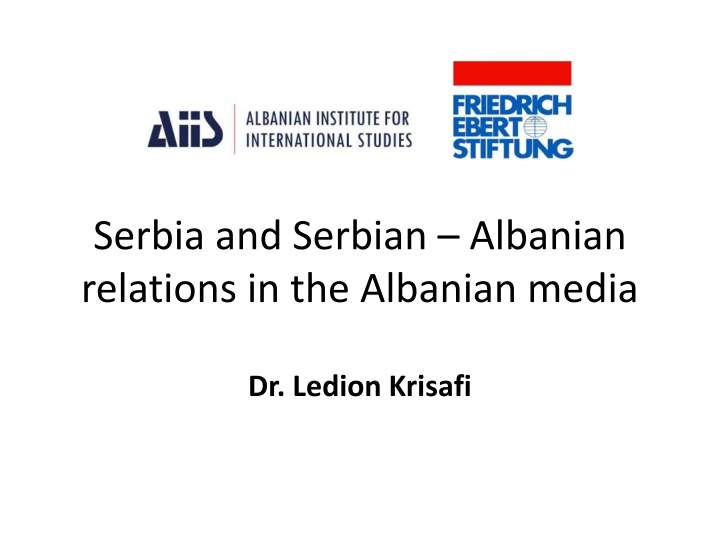
Serbia-Serbian Albanian Relations in Albanian Media Study
Explore the portrayal of Serbia-Serbian Albanian relations in the Albanian media from January to July 2017, analyzing connotations and methodologies used in reporting. The study delves into the nuances of positive, negative, neutral, and quasi-negative sentiments in coverage, shedding light on the perspectives presented by key newspapers.
Download Presentation

Please find below an Image/Link to download the presentation.
The content on the website is provided AS IS for your information and personal use only. It may not be sold, licensed, or shared on other websites without obtaining consent from the author. If you encounter any issues during the download, it is possible that the publisher has removed the file from their server.
You are allowed to download the files provided on this website for personal or commercial use, subject to the condition that they are used lawfully. All files are the property of their respective owners.
The content on the website is provided AS IS for your information and personal use only. It may not be sold, licensed, or shared on other websites without obtaining consent from the author.
E N D
Presentation Transcript
Serbia and Serbian Albanian relations in the Albanian media Dr. Ledion Krisafi
Methodology 3 Albanian-language newspapers: Mapo, Panorama, Shqiptarja.com 1 English-language newspaper: Tirana Times Study period: January-July 2017 10 pre-defined keywords: Serbia, Beograd, Vucic, Albania-Serbia chamber of commerce, Nis-Durres highway, Nikolic, Dacic, arrest of Haradinaj, Beograd-Mitrovice train, Albania- Serbia cooperation.
Connotation Positive, negative, neutral, quasi-negative. An article was classified as having a neutral connotation when a moderate language was used, when the opinions of the author were not included in the article, where the positions of all the parties concerned in the case were mentioned. An article was classified as having a positive connotation when 1) were used words like cooperation, partnership, agreement, improvement, support, etc.; 2) there was a noticeable opinion, position or view of the author and the tone was used to emphasize positive aspects of the issue; 3) the photos or pictures accompanying the article created a positive image to the reader. An article was classified as having a negative connotation when 1) were used words like conflict, war, problem, confrontation, distrust, etc.; 2) the personal opinions of the author were notably expressed, when only the views of one of the parties to the issue were expressed, when the tone used emphasized a negative aspect of the issue; 3) when the photos and pictures used created a negative impression on the reader. An article was classified as having a quasi-negative connotation when the words used were mostly negative but the opinions and view of the author were hardly noticeable, or when the opinions and the view of the author were expressed leaving in this way a quasi-negative impression, but the language used was neutral.
Case study: Serbian presidential elections
